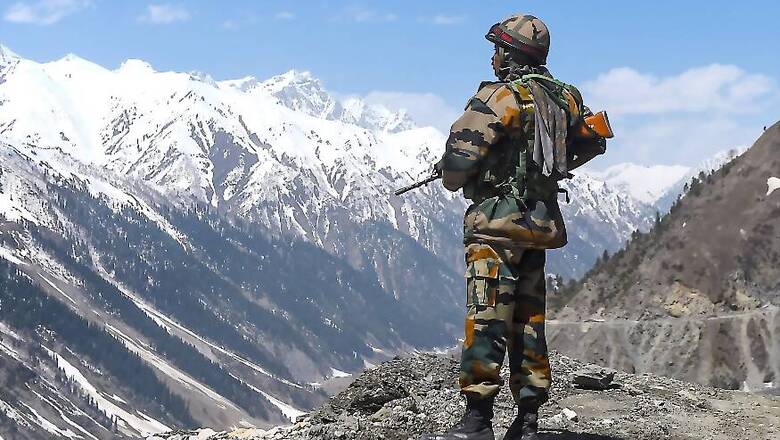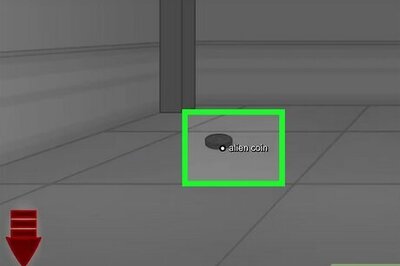
views
Twenty members of the Indian armed forces were killed in a clash with Chinese forces along the disputed border in Ladakh, the Army said on Tuesday, making them the first fatalities on what is known as the Line of Actual Control in 45 years.
The troops were apparently killed in close-quarter combat in the Galwan Valley as more than a month-long hostilities along the border went into a full-blown conflict. The Indian Army said both sides suffered casualties. Beijing did not confirm any deaths, but observers in China appeared to corroborate that information.
“Seventeen Indian troops who were critically injured in the line of duty at the stand-off location and exposed to sub-zero temperatures in the high-altitude terrain have succumbed to their injuries, taking the total that were killed in action to 20,” the Additional Directorate General of Public Information said in a statement.
Earlier on Tuesday, the Army had said that commanding officer Colonel B Santosh Babu, and two soldiers - Havildar Palani and Sepoy Ojha – had lost their lives in the incident.
The Army said both Indian and Chinese troops have disengaged at the Galwan area after the clash, adding that it “is firmly committed to protect the territorial integrity and sovereignty of the nation”.
‘Chinese Side Departed From Consensus’
The government said the “violent face-off” was due to China’s attempt to “unilaterally change the status quo in the area”, and accused the People’s Liberation Army of breaking the agreement struck the previous week with respect to honouring the LAC.
“Both sides suffered casualties that could have been avoided had the agreement at the higher level been scrupulously followed by the Chinese side,” Ministry of External Affairs spokesperson Anurag Srivastava said, referring to the commander-level talks on June 6 and the subsequent flag meetings.
The foreign ministry spokesperson said the senior commanders had agreed on a process for de-escalation in a productive meeting on June 6. “While it was our expectation that this would unfold smoothly, the Chinese side departed from the consensus to respect the Line of Actual Control in the Galwan Valley,” he added.
China in turn, in an aggressive statement, blamed India as the instigator, accusing the Indian Army of crossing the border onto the Chinese side.
Chinese foreign ministry spokesman Zhao Lijian said India had crossed the border twice on Monday, "provoking and attacking Chinese personnel, resulting in serious physical confrontation between border forces on the two sides," AFP news agency reported.
Prime Minister Narendra Modi met union home minister Amit Shah and defence minister Rajnath Singh twice as India discussed a response to the development. Singh briefed the PM about last night's clash as well as the overall situation in eastern Ladakh after he held a high-level meeting with external affairs minister S Jaishankar and the military chiefs.
What Happened in the Clash?
Tensions between India and China had been escalating since early May, after China’s encroachment of thousands of troops into the disputed territory along the Line of Actual Control. The Chinese forces set up camps and brought over artillery and vehicles. They ignored repeated verbal warnings to leave, triggering shouting matches, stone-throwing and fistfights in key border areas.
On 6, June there was a meeting of senior Indian and Chinese military commanders and a commitment to disengagement was made on both sides. However, tensions remained high as Chinese troops had still not withdrawn from certain areas, including the Galwan Valley.
The fatal clashes late on Monday night took place at Patrolling Point 14 of the Galwan Valley, when an Indian commanding officer had reportedly approached Chinese troops, who stood their ground.
The Colonel was reportedly assaulted with stones and Indian soldiers retaliated, which led to close unarmed combat for several hours, but no shots were fired, according to various reports. The soldiers disengaged after midnight.
It has been reported, but not confirmed by Chinese officials, that at least seven Chinese soldiers were also killed. The only admission of casualties on the Chinese side so far came from the editor of their government mouthpiece Global Times.
"Based on what I know, Chinese side also suffered casualties in the Galwan Valley physical clash. I want to tell the Indian side, don't be arrogant and misread China's restraint as being weak. China doesn't want to have a clash with India, but we don't fear it," tweeted Hu Xijin, Editor-in-Chief of Global Times.















Comments
0 comment